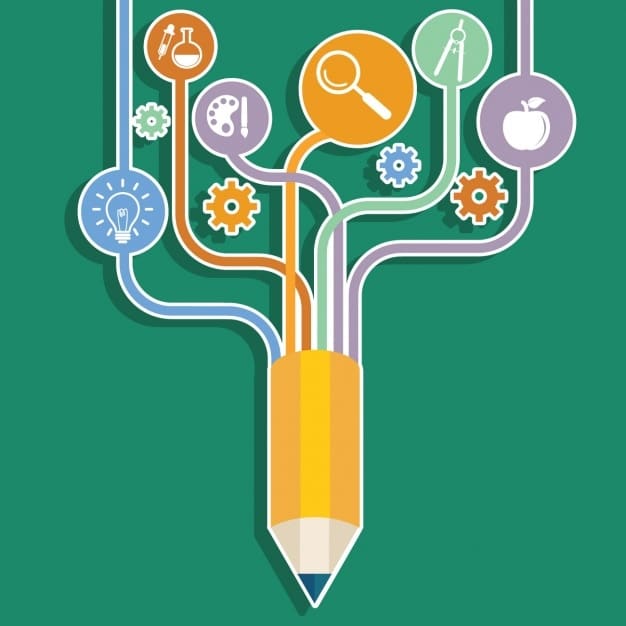Competency-Based Education: A Step-by-Step Guide for US Institutions

Competency-based education (CBE) is a learning model focused on mastering specific skills and knowledge, allowing students to progress at their own pace, and this guide provides a structured approach for US institutions to implement CBE effectively.
Are you seeking to revolutionize your institution’s approach to education? Look no further. Competency-based education (CBE) offers a transformative path, enabling students to advance by demonstrating mastery of skills and knowledge rather than accumulating seat time. This guide provides a step-by-step roadmap for US institutions aiming to successfully implement CBE.
Understanding Competency-Based Education
Competency-based education (CBE) is a pedagogical approach that centers on the student’s ability to demonstrate specific skills and knowledge. It differs from traditional models by focusing on what a student *can do*, rather than how long they spend in a classroom.
Key Principles of CBE
CBE operates on several core principles that distinguish it from traditional education models.
- Mastery-Based Progression: Students advance upon demonstrating competence, not simply based on time spent in a course.
- Personalized Learning: CBE allows for individualized learning paths, catering to different student needs and paces.
- Clearly Defined Competencies: Learning objectives are articulated as specific, measurable competencies.
- Flexibility and Accessibility: CBE often incorporates flexible scheduling and online resources, making education more accessible.
The shift towards CBE represents a fundamental change in how education is structured and delivered, emphasizing student outcomes and real-world application of knowledge.

Assessing Institutional Readiness for CBE
Before diving into implementation, it’s crucial to assess your institution’s readiness for CBE. This involves evaluating existing resources, infrastructure, and faculty support.
Conducting a Self-Assessment
A thorough self-assessment can reveal strengths and weaknesses in your institution’s ability to adopt CBE.
- Evaluate Current Curriculum: Identify courses or programs that could be adapted to a competency-based model.
- Assess Technological Infrastructure: Ensure your institution has the necessary online learning platforms and resources.
- Gauge Faculty Support: Determine the level of faculty buy-in and willingness to adapt teaching methods.
Understanding your institution’s current state is the first step towards a successful CBE implementation.
Defining Competencies and Learning Outcomes
Clearly defining competencies is the cornerstone of CBE. Competencies should be specific, measurable, achievable, relevant, and time-bound (SMART).
Developing a Competency Framework
A competency framework maps out the skills and knowledge students need to succeed in a particular field.
Consider the following steps in constructing a competency framework:
- Identify Core Competencies: Determine the essential skills and knowledge required for a specific program or course.
- Write Learning Objectives: Articulate what students should be able to do upon completion of each competency.
- Align Assessments: Design assessments that directly measure student mastery of defined competencies.
A well-defined competency framework provides a clear roadmap for both instructors and students, ensuring that learning is focused and relevant.

Designing CBE Curriculum and Assessments
Designing a curriculum and assessments that align with CBE principles requires a different approach than traditional course design. Focus on creating learning experiences that allow students to demonstrate mastery.
Creating Engaging Learning Experiences
CBE curriculum should prioritize active learning, real-world application, and personalized feedback.
- Incorporate Project-Based Learning: Allow students to apply their knowledge to solve real-world problems.
- Provide Personalized Feedback: Offer regular feedback that focuses on student progress towards competency.
- Utilize Technology: Leverage online learning platforms to provide flexible and accessible learning resources.
Effective CBE curriculum encourages students to take ownership of their learning, fostering deeper understanding and skill development.
Implementing Technology Solutions for CBE
Technology plays a critical role in supporting CBE. Learning Management Systems (LMS) and other digital tools can facilitate personalized learning, track student progress, and provide access to resources.
Selecting the Right LMS
Choosing an LMS that supports CBE requires careful consideration of features and functionality.
Consider these points when selecting an LMS:
- Competency Tracking: The LMS should be able to track student progress towards specific competencies.
- Personalized Learning Paths: The LMS should allow for the creation of individualized learning paths.
- Assessment Integration: The LMS should integrate with assessment tools to streamline the evaluation process.
The right technology can significantly enhance the efficiency and effectiveness of CBE implementation.
Providing Faculty Training and Support
Faculty buy-in is essential for successful CBE implementation. Providing adequate training and support can help faculty adapt to this new pedagogical approach.
Developing Faculty Expertise
Strategies for developing faculty expertise in CBE:
- Offer Professional Development Workshops: Train faculty on CBE principles and best practices.
- Provide Mentoring Programs: Pair experienced CBE instructors with those new to the model.
- Foster a Collaborative Environment: Create opportunities for faculty to share ideas and resources.
Investing in faculty development ensures that instructors are well-equipped to deliver high-quality CBE programs.
Evaluating and Refining CBE Programs
Continuous evaluation and refinement are crucial for the ongoing success of CBE. Regularly assess student outcomes, gather feedback, and make adjustments as needed.
Establishing Evaluation Metrics
Define clear metrics for evaluating the effectiveness of CBE programs.
- Student Achievement: Track student progress and mastery of competencies.
- Employer Feedback: Gather input from employers on graduate preparedness.
- Program Completion Rates: Monitor the number of students who successfully complete CBE programs.
Use data-driven insights to identify areas for improvement and ensure that CBE programs are meeting their goals.
| Key Point | Brief Description |
|---|---|
| 🎯 Defining Competencies | Clearly outlining specific skills and knowledge students must master. |
| 🧑🏫 Faculty Training | Ensuring faculty are prepared to teach within a competency-based framework. |
| 📊 Evaluation Metrics | Establishing clear metrics to measure CBE effectiveness. |
| 💻 Technology Solutions | Using technology to facilitate personalized, competency-based learning. |
Frequently Asked Questions
▼
CBE focuses on demonstrating mastery of specific competencies, allowing students to progress at their own pace. Traditional education is based on seat time, where students advance based on time spent in a course.
▼
Institutions can use a variety of assessments, including projects, presentations, exams, and portfolios, to measure student competency. These assessments should directly align with the defined learning objectives.
▼
CBE offers personalized learning, allowing students to focus on areas where they need the most support. It promotes deeper understanding and skill development, leading to better career preparedness.
▼
Technology, particularly Learning Management Systems (LMS), facilitates personalized learning, competency tracking, and access to resources. It also streamlines the assessment process and provides valuable data for program evaluation.
▼
Institutions can provide professional development workshops, mentoring programs, and collaborative environments to support faculty in adapting to CBE. Clear communication and ongoing support are crucial.
Conclusion
Implementing competency-based education can transform US institutions, enabling personalized learning and ensuring students graduate with demonstrable skills. By focusing on clear competencies, leveraging technology, and providing robust support, institutions can create educational experiences that truly prepare students for success.





